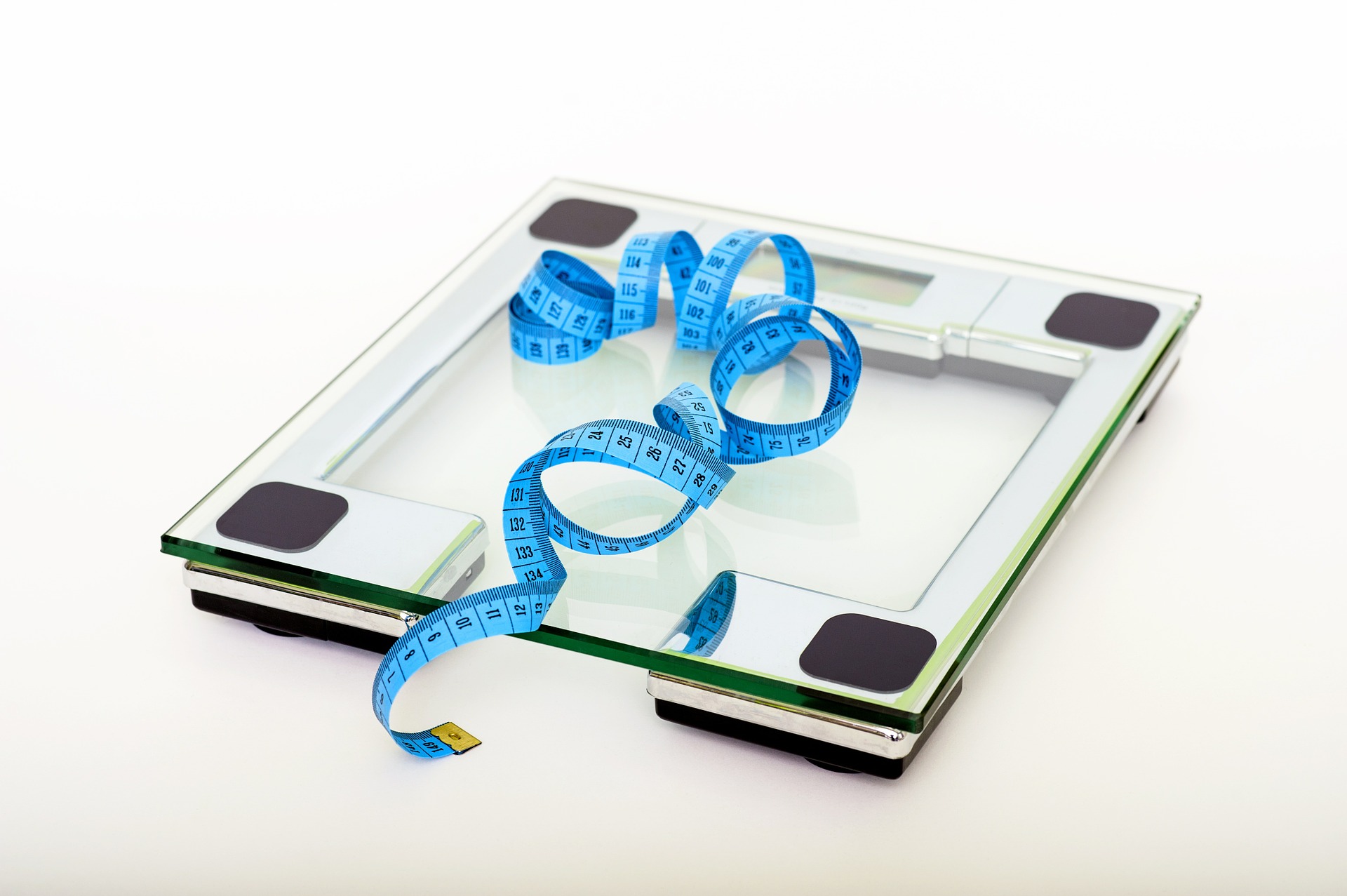Weight loss isn’t easy, but it also doesn’t need to be so complicated. At Noom, we’re committed to helping you reach your goals in a simple, effective, and sustainable way.
How to lose weight
With weight related health concerns on the rise, many individuals have weight loss goals they are working towards to help them reach a healthier body mass index (BMI) to combat these concerns. A healthy BMI range is between 18.5 and 24.9. You can calculate your BMI by taking your weight in kilograms and dividing it by your height in meters squared (kg/m^2). While there are other ways to measure your health, BMI can be a good indicator of health risks associated with weight. Generally, weight loss is achieved through a combination of diet changes and physical activity with the idea that weight loss will be maintained long term. However, today many struggle to maintain weight loss after the fact. Diets and “quick fixes” make big promises around weight control but may not always think through sustainability and long term weight management. It’s a common conversation in the healthcare industry that lifestyle changes need to be made to maintain weight loss for years to come. These types of changes over “dieting” can also lead to safe and steady weight loss.
Read more: Fastest Ways to Lose Weight
How fast should I lose weight?
A recommended weight loss pace is losing about 1-2 pounds each week. With a pace such as this you will need to have a calorie deficit of 500-1,000 calories each day achieved through exercise and incorporating nutritious, calorie conscious foods. This pace allows for working through balance and practicing lifestyle changes for long term weight loss success. It also allows for the right kind of weight to be lost (fat over muscle and water) and for your metabolism to stay healthy in the process. Generally losing weight too quickly can lead to damage to your body’s metabolism, and well, backfire in the end.
How much weight loss is healthy?
This will depend on your starting weight and what your weight loss goals are, however, health improvements can be seen with a 5% reduction in body weight or more. When losing weight you may hear the term “clinically significant weight loss,” which is just a fancy way of saying that you lost enough weight to make measurable changes to your overall health and disease risk factors such as cholesterol, blood glucose, and blood pressure (you know, numbers that will really make your doctor happy). Talk with your healthcare provider to find out what amount of weight loss would be safe for you to aim for.
Best Diets to Lose Weight
When the word “diet” first comes to mind, it’s not uncommon for a whole slew of negative thoughts to accompany it. Diets are often thought of as extremely bland, restrictive, and unpleasant meal plans. But in reality, a diet is simply a set of food choices guided by a person’s individual needs and preferences. And even though they aren’t the only factors to consider, diet and nutrition are undoubtedly some of the most important factors to consider for weight control. Along with regular exercise, proper sleep, and stress management, finding a nutrient-dense diet that makes calorie restriction feel easy for you will not only help with initial weight loss, but it will help with long-term weight maintenance as well.
Read more: Best Diets for Weight Loss
What’s the best diet for weight loss?
The best diet for weight loss is typically nutrient dense, calorie conscious (but not too restrictive), and the one that makes the most sense for your own lifestyle, preferences, and needs. Put simply, the best diet for weight loss is the one that feels right for you. Not the one that you’ve been seeing all over the internet, not the one that your best friend told you about last week, but the diet that feels like the one you could live happily with every single day for the rest of your life.
When it comes to finding that right diet, it’s easy to get wrapped up in focusing only on nutrition–how “healthy” or “unhealthy” certain foods are. And while that is undeniably important for weight loss, it’s just as important to consider other factors about your diet such as how much you enjoy having certain foods, whether or not your feel motivated to stick with your planned meals, how sustainable your food choices are, and the psychology behind those food choices. It’s not as simple as just choosing the latest fad diet and calling it a day. Finding the best diet for weight loss might take some experimenting, some investigating, and lots of trial and error. But if it means finally having the weight control that you’ve always dreamed of… it’s worth it!
What diets support long-term weight loss?
Even though the same exact diet isn’t going to be appropriate for each and every one of us, there are a few key factors we should all consider when determining which diet best supports long-term weight loss. When it comes down to the nitty gritty science behind weight loss, one factor we can’t overlook is metabolic rate. Your metabolic rate is the rate at which you burn energy throughout the day. Or in other words, it’s the total number of calories you burn each day. To promote weight loss, you need to consume fewer calories than the number that you are burning (your metabolic rate). This is the reason why most diets for weight loss emphasize calorie restriction. And this is the reason why Noom emphasizes eating a nutrient-dense diet. A nutrient-dense diet ensures that your body continues to receive all of the nutrition it needs from vitamins, minerals, and macronutrients, even when you’re restricting calorie intake.
So how do you make a diet like this stick for long-term weight control? The key is discovering your own personal food system. A personal food system helps you navigate all of the internal and external factors that influence food choices–environment, thought distortions, social situations, and emotional triggers. These factors are almost unavoidable, but the trick to overcoming them is developing a personal food system that aligns with your own values and includes strategies to work around them. Once you’ve mastered making food choices in this way, and with your metabolic rate in mind, long-term weight loss won’t feel so out of reach.
How do macronutrients impact weight loss?
Macronutrients are a pretty hot topic these days. And rightfully so, considering that they are the body’s primary source of energy. But you might be wondering… what are “macros” exactly? Basically, macronutrients are the nutrients required by the body in relatively large amounts to stay nourished. They include fat, protein, carbohydrates, fiber, and water. Each of these macros has a unique set of functions in the body, and no one alone is more important than the other.
So when it comes to weight loss, it’s best to take a balanced approach and make sure that you are including some foods from each macronutrient group. And that’s why any diet that emphasizes one nutrient over the other should raise a red flag… think low-carb, high-fat, high-protein. Now there are some situations where diets like these might be appropriate. But if that’s the case, you will likely have heard from your doctor or dietitian on the matter. For most individuals who are simply interested in losing weight, a diet that balances all of the macronutrients is going to be your best bet.
Best Exercises to Lose Weight
Physical activity can be defined as any planned or unplanned movement that results in calorie expenditure (think walking at the mall, carrying groceries, or working out at the gym). Regular physical activity carries a host of positive health benefits including improved body composition, increased energy levels, and reducing the risk of chronic disease. When combined with a balanced and mindful eating approach, regular physical activity can also play an important role in weight loss.
Read more: Best Exercises to Lose Weight
What is the best exercise for weight loss?
Highly contested and debated amongst health and fitness professionals, Noom has finally figured out the “best exercise” for weight loss. The best exercise for weight loss is the exercise that best fits your life, schedule, and preference! As discussed previously, exercise alone does not lead to weight loss although it can play an important role when combined with a mindful and controlled diet. Given this fact, finding an exercise plan that you will stick with and enjoy, is vital. Something as simple as walking daily can help burn calories which has an overall impact on your daily calorie balance; an important part of any weight loss plan.
How does cardio impact weight loss?
“Cardio” is short for cardiovascular exercise which is any activity that elevates the heart rate and looks to improve the overall capacity of the cardiovascular system (think heart rate and circulation). Within the broad category of cardiovascular exercise, there are two distinctions that are important to make. Cardiovascular exercise can be either aerobic (with oxygen) or anaerobic (lacking oxygen). These distinctions directly relate to the intensity of the exercise and the subsequent biochemical energy system being used. Ok enough of that science talk, #noomnerds.
When looking at cardio and weight loss specifically, it’s important to factor in the intensity, duration, and frequency. The main benefit of cardiovascular exercise for weight loss, outside of increased cardiovascular health, is calories burned. Finding activities you enjoy and varying the intensity will be the best approach to maximizing calories burned. It’s also important to remember these can be various activities and are not confined to living on a treadmill or elliptical. Walking, running, swimming, hiking, and even lifting weights at a faster pace can all fall into the category of cardiovascular exercise!
How does weight lifting impact weight loss?
“Weight lifting” also known as strength training is any activity using resistance to induce muscular contractions resulting in an increase in endurance and size of skeletal muscle. Benefits include increased strength, bone density, and improved body composition. When looking at weight lifting and weight loss it’s important to take into account calories burned. In general, weight lifting burns fewer calories than a steady state cardiovascular based activity of the same duration. This is due to overall intensity and the fact that weight lifting tends to include more rest and breaks between sets, to allow for muscle recovery and performance. Now don’t get us wrong, weight lifting is an important part of a healthy and balanced approach to exercise, but when looking at weight loss it will not provide as efficient or effective approach to burning calories. A program including a balance of cardio and weight lifting is the best of both worlds, as it allows for efficient calorie burning as well as strengthening and health of muscles and joints.
Ideal body weight: How much should I weigh?
When you go in for you yearly check-up, what’s usually the first clinical thing that happens (aside from all the forms and paperwork)? You step on a scale. Body weight can be an indicator of health for a multitude of reasons, and what your provider is really looking for is your body mass index (BMI). BMI lets you know if your weight is healthy for your height and is calculated by taking your weight in kilograms and dividing it by your height in meters squared (kg/m²). While this metric isn’t perfect, it offers insights into your health risk factors. Risk factors correlated with a high BMI (also associated with increased body fat) include, but are not limited to: high blood pressure, Type II diabetes, gallbladder disease, stroke, osteoarthritis, chronic inflammation, and some cancers, according to the Center for Disease Control and Prevention. A healthy BMI range to aim for is between 18.5 and 24.9 for adults between 20 and 65 years of age.
Read more: Ideal Body Weight: How Much Should I Weigh?
How much should I weigh?
To find out what your ideal body weight may be, you can use this BMI chart from the National Heart, Lung, and Blood Institute. You may also want to discuss what an ideal weight is for you with your healthcare provider. If your goal is to lose weight, regular physical activity, enjoying more nutrient dense foods, working towards lifestyle change will help you get closer to a healthy body weight.
Why is BMI important?
A BMI greater than 30 falls into the obese category. While there are rare instances where this may mean that an individual is an intense athlete and carrying more muscle than the average person (see Body Composition below), it’s more common that a BMI in an obese category is associated with increased body fat. BMI’s in this range also carry health risks such as increased risk for heart disease, diabetes, joint pain, depression, and decreased mobility. Why is this so dangerous to your health? This increased fat can be visceral, meaning that is surrounds our bodies’ vital organs such as the heart and liver.
Body composition: What is it and how to measure
Within health and fitness, body composition is a phrase used to describe the components that the body is made of. These include body fat and fat free mass (muscle, water, and bone). Although measuring body fat accurately can be challenging (we will break this process down later), body composition can be helpful in tracking health and fitness progress. In general, a lower body fat percentage and a higher fat free mass is a more favorable body composition and can be a predictor of lower disease risk and overall health. Body fat percentages vary based on multiple factors including age, activity level, sex, and hormones.
Read more: Body Composition: What is it and Gow to Measure
What makes up body composition?
1. Body fat
A necessary component of a healthy and functioning body, body fat can be found across all parts of the body. Essential body fat levels help protect internal organs (visceral fat), control hormone levels, and store fuel for the body’s various energy systems. Although some body fat is essential, non-essential levels or excess levels of body fat can pose a health risk. Body fat levels vary between men and women and can also depend on levels of fitness. Healthy body fat levels for men are anywhere from 10-25% and 20-35% for women.
2. Muscle
One fat-free component of body composition measurements is muscle mass. An important factor for overall health and longevity, muscle is a soft tissue made of proteins. Muscles main function is to produce force and help the body move. Muscle is considered metabolically active, which is a fancy way of saying that it is able to burn calories and use stored energy from fat. For this reason, higher levels of muscle relative to body fat, are typically equated to the best health outcomes.
Research has also correlated higher levels of muscle mass to increased longevity and a longer life span. This could be based on multiple factors but most recently has been related to relative strength and balance, which lowers the risk of falling and subsequent injuries, as age increases.
3. Water/bone
The final fat-free components that make up body composition are bone and water. The human body can be made of up to 60% water. This water is found in interstitial fluid or fluid that makes up cells and organs. This water is also used to regulate body temperature and provide hydration for normal body processes.
Why is body composition important?
Body composition is important for the simple fact that it can be a predictor of health. A proportional balance of fat and fat free mass is important for a healthy body. Higher body fat percentages have been associated with increased risk for things such as cardiovascular disease, diabetes, and hypertension.
On the flip side, a body fat percentage that is too low can also have adverse health consequences and lead to things such as hormone imbalance, loss of bone density, and a weakened immune system.
For these reasons, knowing your body composition is where the power truly lies. Without awareness of body fat and fat free mass, it is difficult to take the necessary steps to keep the body healthy. Body composition levels are also another great way to track progress in weight loss or strength training programs. In general, body composition can be a more accurate predictor of weight because it takes into account the actual components of body weight and not just weight in general.
Best diet plans to lose weight
Diet plans are arguably the most common approach to weight loss. But are they truly the best way to lose weight? Unfortunately, the answer to that question isn’t always black and white. Diet plans come in a ton of different shapes and sizes, which means that they aren’t all created equal. In order to decide whether or not a diet plan is a good idea for weight loss, it’s important to take a close look at the underlying principles of that plan. If a diet plan feels restrictive, makes you feel guilty about your choices, or just simply isn’t an enjoyable way of eating to you, these are red flags that suggest a diet plan will be difficult to follow and that the results likely won’t last. On the other hand, a diet plan that aligns with your own values, needs, and food preferences has more potential to help you develop sustainable lifestyle behaviors, improve your health, and lose weight for good. Before starting any diet plan, ask yourself this… “Is this a way of eating that I could live with forever?” If the answer to that question is no, then why eat that way now?
High-quality meds. Powerful psychology-based weight loss.
- Starting at $149/month
- Meds to your door in 7 days
- 100% online access to coaches and doctors
- Backed by Noom's award winning behavior change program
Medications require consultation and prescription by clinician through Noom platform. Not all customers will qualify for prescription. Compounded semaglutide is produced in an FDA-registered facility but not reviewed by the FDA for safety, efficacy or quality.

Read more: Best Diet Plans to Lose Weight
What’s the best diet plan to lose weight?
Simply put, the best diet plan to lose weight is not a diet plan at all. Most diet plans are designed to be a temporary way of eating that is drastically different from the way you normally eat, and therefore it results in quick weight loss. But what happens when you get tired of such a strict and structured diet plan? There’s a good chance that you’ll revert right back to your old ways of eating, and that all of the weight you’d lost will be found again. This can be incredibly frustrating. Especially when you’ve been feeling so great about the weight you lost in the beginning and how hard you’ve been working to follow a diet plan.
But what if I told you it’s possible to improve your eating habits, lose weight easily, and enjoy yourself and the foods you’re eating all at the same time? And without following a diet plan at all! It turns out, the best “diet plan” to lose weight is pretty basic–it’s as simple as limiting the amount of calorie dense foods you eat, and instead choosing more nutrient dense foods in their place. Aside from that, all of the big decisions like exactly what to eat and when are completely up to you! So what’s the secret to making those decisions feel easy? Keep reading to find out…
How can you build a diet plan for weight loss that works?
When it comes to finding a diet plan that works for long-term weight loss, it’s not about knowing and loving every superfood out there. Instead, it’s about knowing yourself and why you make the choices that you do each day. If we’re being honest, most of us already know what types of foods we should be eating more of in order to lose weight, but that doesn’t seem to make it any easier to choose those foods when we’re faced with less healthy but more tempting options. So in order to get to the root of this decision making, and in order to begin feeling in control of those decisions, you’ve got to think about the psychology that’s driving them. A diet plan that doesn’t consider how your thoughts, feelings, and emotions ultimately lead to the food choices you make isn’t much of a diet plan at all.










